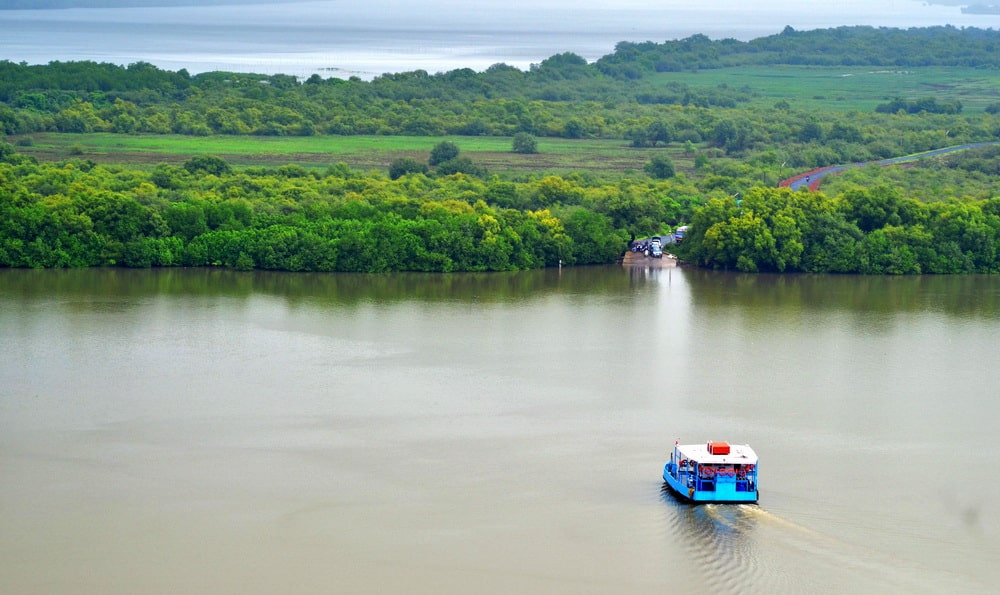
Do you want to visit a peaceful island of Goa? A place where one could run away from the noisy public places and spend time with the beauty of a quaint, serene village? If yes, then it is time to go to spend some time on Divar Island.
The island of Divar lies in the Mandovi River, barely 10 kilometers from Panjim, which is the capital of Goa. It is a place that is a veritable repository of rich history, culture, and heritage. Centuries ago, it was once a busy Hindu village before it was razed to the ground by Muslim marauders and Portuguese occupiers. Yet you can find several of the old temples, churches, chapels, and monuments still standing these days. Divar Island is also noted for its feasts and festivals, particularly the Bonderam and Potekar.
Unlike the other places in Goa that attract tourists, Divar Island is devoid of beaches, shacks, and nightclubs. Rather, everything on it presents a totally contrasting experience that includes peace and the possibility of becoming familiar with history, festivals, architecture, food, and quietude. Time on Divar Island stands still, and Nature shows its beauty.
Whether on the lookout for a special, memorable experience in Goa, then look no further than its heart—Divar Island. Everything you need to know on how to get there, where to stay, what to do, and tips for a visit can be found here.
How to Reach Divar Island
The only way to reach Divar Island is by a government-operated ferry. There are three ferry points: Old Goa, Naroa, and Ribandar. By no other route or means can one reach this island. Below are the details for each ferry point:
The ferry operates from 6 a.m. to 2 a.m., taking approximately 15 minutes to reach the Piedade terminal on the southeast side of Divar Island. Passengers ride the ferry for free, while four-wheelers pay a minimal fee of INR 10.
If you’re coming from Bicholim or Mapusa in North Goa, the ferry junction is convenient. Located in Naroa village in the Bicholim district, the ferry terminal operates from 7 a.m. to 8 p.m. It takes about 20 minutes to cross over to the Naroa terminal on the north side of Divar Island.
Ribandar: This point lies close to Chorao Island and is convenient if one is coming from Panjim or Central Goa. Operations of the ferry are from 7 am to 8 pm and from the point of departure, it is approximately about 30 minutes to reach the Ribandar terminal which lies on the south-west side of Divar Island.
What to Do on Divar Island
There is so much to do and see on Divar Island: from culture to history, festivals, architecture, food, and simply relaxation. Here are some of the things:
Culture and History
The history of Divar Island is rich. You may want to learn about such history by visiting these historical places:
The Ruins of Kadamba Dynasty in Piedade: This is a hilltop site on which there was a Ganesh Temple—eventually made into a church and chapel—where you can see ancient carvings and superb views of the Mandovi River and Old Goa.
The Church of Our Lady of Compassion: The Jesuits built this beautiful church in 1599 on the site of a Hindu temple. They later adorned it with a dome, a bell tower, and finally, altars. Nice views of the river and island from here.
The Museum of Christian Art: The place preserves the rich artistic and cultural talent that Goan Christians have produced from paintings to sculptures, furniture; in short all types of arts and crafts created using essentially Portuguese and Indian styles.
Festivals and Events
Divar Island celebrates unique festivals:
Bonderam: This is celebrated on the fourth Saturday of August. In this festival, Colourful floats parade – with music, dance, food, drinks.
Potekar: This is much like Halloween, three days before Lent. The islanders wear masks, and move around the island making merry and even playing pranks.
Feast of Our Lady of Compassion: This is a festival that falls on August 15. The church hosts a mass followed by a procession around the island. As it coincides with Indian Independence Day, people display flags and sing patriotic songs.
Architecture and Landscape
The houses on Divar Island consist of a composite of fusion and beauty. Some of the storied houses of Divar are:
The house of Bostock: Constructed by a British officer who married a Goan lady in the XVIII century, the house has a veranda, balustrade, and colonial arches.
The house of Menezes Braganza Pereira: Built by a rich Goan family in the XIX century, it contains an eaved, tiled roof, wooden windows, and azulejos tiles to reflect the Portuguese influence.
The House of Miranda: This house was built in the 20th century, a work by one of the most famous poets/writers of Goa. The house is surrounded by a garden. You will find paintings and a library that display his works. You can go to the Miranda Museum nearby, which portrays the same.
Tips for visiting Divar Island
– Plan Your Ferry Trip: Opt for the ferry point most suitable for you. Or take different points to explore different sides of the island.
– Walk or Cycle: This island is so small that walking. Or cycling would perhaps be the best modes of transport to soak in the charm of the island.
– Respect Local Customs: Be respectful towards the local customs and traditions of the place. Especially in the fairs and during religious ceremonies.
– Carry Basic Things: Carry along water, some snacks, and of course, sunscreen, as shops here are few.
Visiting Divar Island has its own charm, which is a matchless experience in peacefulness. What will truly make the trip memorable is its beauty, history, and the sense of quietude that envelops one in a nuts


